Postcards from the St. Louis Hotel in Downtown Duluth
Postcard images of the St. Louis Hotel probably don’t do justice to its original splendor. The first of its two buildings went up in 1882 and was considered Duluth’s finest hotel. It was destroyed by fire on the morning of Jan. 13, 1893 and was replaced in 1895 by the Providence Building, which still stands at 332 W. Superior St.
The building shown in the postcard above was originally the Brighton Hotel, built next to the St. Louis in 1887. After the original St. Louis went up in smoke, the Brighton became the new St. Louis Hotel. The building was demolished in the early 1930s and replaced by the Medical Arts Building, which remains today at 324 W. Superior St.
The postcard below shows the St. Louis positioned between the Torrey Building (left) and Providence Building (right). The card has a message written on the front that is dated Dec. 29, 1906.
Zenith City Press has a sketch circa 1888 of plans for a St. Louis Hotel expansion that offers a sense of what the 1882 hotel looked like, but the expansion parts at center and left do not look like anything that was later built.
The center part looks somewhat similar to the Brighton, but with more ornate features. The structure at left was probably never built. Construction on the Torrey building began in that spot in 1892.
Thomas Cullyford was proprietor of the original St. Louis Hotel, and also built the Brighton. He leased the St. Louis to James A. Butchart and Alexander Michaud after opening the Brighton.
The 1893 fire was caused by an explosion in the engine room that shook the building and shot flames up the elevator shaft, through cracks in lower-level floors and through interiors of wooden partitions. Two guests and one hotel employee died in the fire.
Butchart had been “seriously ill” at the time with “pleurisy, possibly pneumonia,” according to a 1917 retrospective article about the fire published in the Duluth Rip-saw newspaper. He pulled himself out of his sickbed and saved a woman’s life during his escape, despite his chest being badly blistered by the sickness, which also caused painful breathing and coughing.
Butchart was on his way down the stairway when he met the wife of a mining engineer with a big bundle of belongings. He told the woman to drop her things and get out as fast as possible.
“The woman suddenly became hysterical and collapsed,” according to the Rip-saw story. “Butchart had to carry her down the stairs. In doing so, he burst that huge blister on his chest and the water from it ran down his body.
“Butchart was outside only a moment when he remembered that his mother was in the Michaud apartments. He tried to go up a ladder to the second story but the police pulled him back. He then was taken to the Spalding Hotel where, after exposure and excitement had finished the work, he was so dangerously ill that he could not be moved for some days.”
Below is the report on the fire from the Duluth Evening Herald of the same day.
Another big fire
Duluth visited a second time within a few weeks by a disastrous conflagration.
Hotel St. Louis caught fire shortly before eleven o’clock and in two hours was no more.
Burned like a tinder box and people were lucky to get out with their lives.
One or two are believed to have perished — the Brighton narrowly escaped.Another disastrous conflagration has visited Duluth and the Hotel St. Louis is a smoking ruin and the Brighton is damaged to some extent. Fire was discovered by the engineer in the basement at 10:45 o’clock this morning. It had probably started from a leaky gas meter, near which a gas jet was burning, as a slight explosion was noticed before any fire or smoke was observed. The employes of the hotel immediately ran through the corridors arousing the guests and crying “fire,” but the dense smoke drove them back from the remote ends of the passage ways, and it is feared that some lives are lost.
The fire spread with great rapidity and in three minutes after the first sign was seen the entire building was filled with dense clouds of suffocating smoke. The affrighted guests had considerable difficulty in escaping, and one very much alarmed lady, who was on the balcony on Fourth avenue, refused to get on the ladder, when a sturdy fireman grabbed her and carried her down the ladder. Mrs. Butchart and several other ladies came down the fire escapes at the rear of the building from the third story, unassisted. About forty of the guests escaped in this manner and several came down on the pompier truck and other ladders. A number of the male employes, who slept in the cupolas on the roof, came out on the roof and completed their toilets to the enlivening accompaniment of a below zero atmosphere.
The firemen arrived on the scene at precisely four minutes after the alarm was turned in and had their hose in position but the water pressure did not materialize until some minutes later. It was less than fifteen minutes after the alarm was given before it was a matter of easy conjecture that the building would be a complete loss, and the southwest corner fell together with the balcony at 11:30.
The center portion of the south wall fell into Fourth avenue at 11:40, and the southeast corner fell onto Michigan street at 11:50, followed a minute or two later by the south wall, except a small portion adjoining the Brighton.
The flames were very fierce and the heat was intense on the Michigan street front, and the snow and ice melted away in a few moments. The pompier ladder was in danger for a time while the firemen were working on other portion of the building but a number of citizens trundled it to a place of safety.
Another view of it.
Progress of the fire as seen from the Superior street side.At 11:15 o’clock the flames had broken out on the southwest corner and from that time forward the flames crept steadily eastward on the Superior street front. At about 11:25 o’clock the smoke raised and revealed the angry flames savagely darting their destroying tongues from every window and opening. From that on thev raged fast and furious, eating away the shell-like structure with a rapidity rivalling a dog with a pot of mush. The fire engine at the corner of Superior street and Fifth avenue west commenced to throw a heavy stream. The awnings on the corner of the Phoenix building caught fire but were soon extinguished. Aside from the blistered signs and store fronts, the damage sustained by that whole block front on the north side of Superior street is considerable. Many windows in the Palladio are cracked and all the fronts between that and the Phoenix block are in the same fix. All the windows on the second floor are badly cracked as are all of those on the ground floor. Cate & Clark, Haug Bros., coal dealers, and the candy shop in the same room, together with the front of Gordon & Henzey are wholly broken out.
At 1:30 o’clock the frequent crashing sounds gave way to one of terrific force and the walls on the Fourth avenue side fell in together with most of those on Superior street.
After much trouble the standpipe on the front of the Brighton was connected with a hose and a stream was soon pouring out on the roof. Simultaneously with that, some chump commenced throwing bed clothing out of the front of the Brighton. They lodged on the wires and would have made excellent fuel for the flames had the front of that building caught.
A hose line was playing on the part from the top of the Phoenix building and the fire laddies kept up their struggles to get more streams on the Brighton’s exposed wall. With a loud crash at 11:50 o’clock the remainder of the Superior street wall of the St. Louis fell outward half wav across the street, just missing several firemen working in front of the Security bank. That proved the salvation of the Brighton and from that on, thanks to the good wall, the only work to be done on that side was to let the streams of water play up and down the broad expanse of heated wall.
The line men for the street railway, telephone and electric wire were all the while busily engaged in cutting Superior street wires and putting things generally in shape so that as little damage as possible would ensue and that they could be put in working order as soon as possible after the flames were sustained. At 12 o’clock it was plainly to be seen that the Brighton on that side was safe.
The old Fargusson building, probably not satisfied with its late ordeal with the flames, broke out in C. E. Lovett’s old office with a small blaze. A few streams from a hose near by rendered those sardonic swords of flame as invisible during the rest of the fire as was Col. Craig, of low water works pressure fame, himself during the whole matinee.
Losses and insurance.
The figures as accurately as they can be obtained at present.The St. Louis hotel building belongs to The Realty company, a corporation organized under the laws of the state of Maine. It was valued at $50,000 and was insured for $20,000. The rentals were also insured for $10,000. The insurance was placed as follows:
The Brighton hotel building is also owned by the same company. It is impossible as yet to determine the loss, as it is almost entirely from damage by water. The building is insured for $85,000 and the rentals for $20,000. Stryker, Manlev & Buck are the agents of both buildings.
The loss of Messrs. Michaud & Butchart has not been figured out as yet, but is believed to be in the neighborhood of $40,000. Mr. Michaud could not give the amount of insurance on the furniture, but said it is about $20,000. R. A. Taussig has $6500 on the furniture and $14,250 concurrent was allowed, but whether the firm carried the entire amount could not be learned. Mr. Butchart carried $800 on his personal effects.
Losses of tenants.
American Express company probably the heaviest loser.Aside from the different branches of the hotel business, there were but few tenants. The Chicago, St. Paul, Minneapolis & Omaha people lost everything, including office fixtures, tickets and ticket cases and quite a sum of money in the counter cash drawer. Agent Sisler is at present unable to give an estimate of the actual loss. The company carries blanket insurance. General Agent Geo. M. Smith lost all the company papers, etc., and besides this had a loss of personal effects of about $500, upon which he had $300 of insurance. Mr. Sisler’s personal loss is about $200 and Mr. L. V. Brown’s about $150, and they had no insurance. The company will have temporary offices in Gordon & Henszey’s store across the street.
The American Express company in the same room lost a large amount of express matter some of it outbound and some of it inbound. All their fixtures and supplies were burned. The contents of the safe are supposed to be all right, but if they are destroyed the damage will be much greater as there was large quantity of money there. This company also carries blanket insurance. The company has secured the old Democratic club headquarters on Third avenue west and is open for business there temporarily. Agent Hughes and his force of clerks and drivers lose personal amounts ranging from $50 each upwards, and on which there is no insurance.
The Pioneer Fuel company lose all their office fixtures and furniture but they are covered by blanket insurance. The employes of the office and Manager Ferguson have some personal uninsured losses. They are now located in the East End branch office, 301 East Superior street.
E. C. Holliday loses all his desks and fixtures and a number of valuable plats and papers. He could not be seen but is supposed to be insured.
The Security bank in the Brighton also sustained some loss by smoke, heat and water.
The Phoenix block is damaged quite a good deal, also C. F. Johnson’s building adjoining. All the large plate glass windows in the block were cracked and broken by the intense heat, and the woodwork on the window casings and elsewhere is charred and blistered. The loss is covered by general insurance.
May be lives lost.
Several people are missing and one woman is believed to have perished.The general rumors of loss of life are exaggerated, but if a careful sifting down of the reports is correct it is bad enough. It is pretty reasonably certain that some woman perished on the third floor, also some large man. Fred Bennett, who roomed in the hotel, stumbled over a prostrate body which he was unable to save. His singed hair and eyebrows and reddened face tell the severity of his experience.
One of the scrub women is missing and she is thought to have perished. Engineer Fraser, of the Chicago, St. Paul, Minneapolis & Omaha railway, was not in the city, although a report was rife that he had been seen here.
An elevator boy, answering to the name of Louis, was also reported missing, but it is not believed that he is burned. The night clerk reports having aroused several people, but one large man he was unable to awaken although he pounded and kicked him.
Aid from Superior.
The fire commissioners telephoned to Superior and in thirty-five minutes after receiving the summons Assistant Chief Kellogg with twelve men, six horses, a steam fire engine and a hose cart were at the scene of the conflagration. They came over on the ice making a magnificent run. In less than two minutes they had two splendid streams playing on the fire and they did excellent work.
Windows cracked.
Every plate glass window in the Phoenix block is a total wreck. All of the second story windows on Superior street are also broken. The losses to tenants are very slight if, indeed, there are any. The plate glass in the Chamberlain & Taylor store is also broken and a number of the windows in the Palladio building are also broken.
Coincidentally, the Herald from the previous day published official proceedings of the Duluth City Council from Jan. 9, in which Duluth Mayor Charles d’Autremont noted potential fire dangers related to the St. Louis.
Recommended Links:
Leave a Comment
Only registered members can post a comment , Login / Register Here


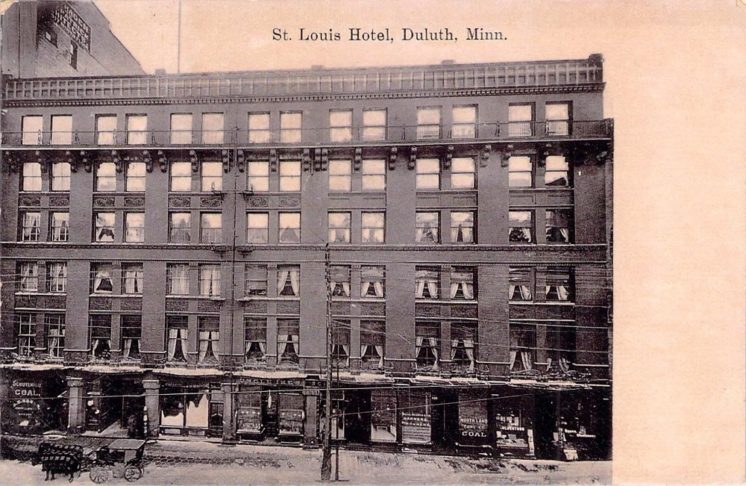
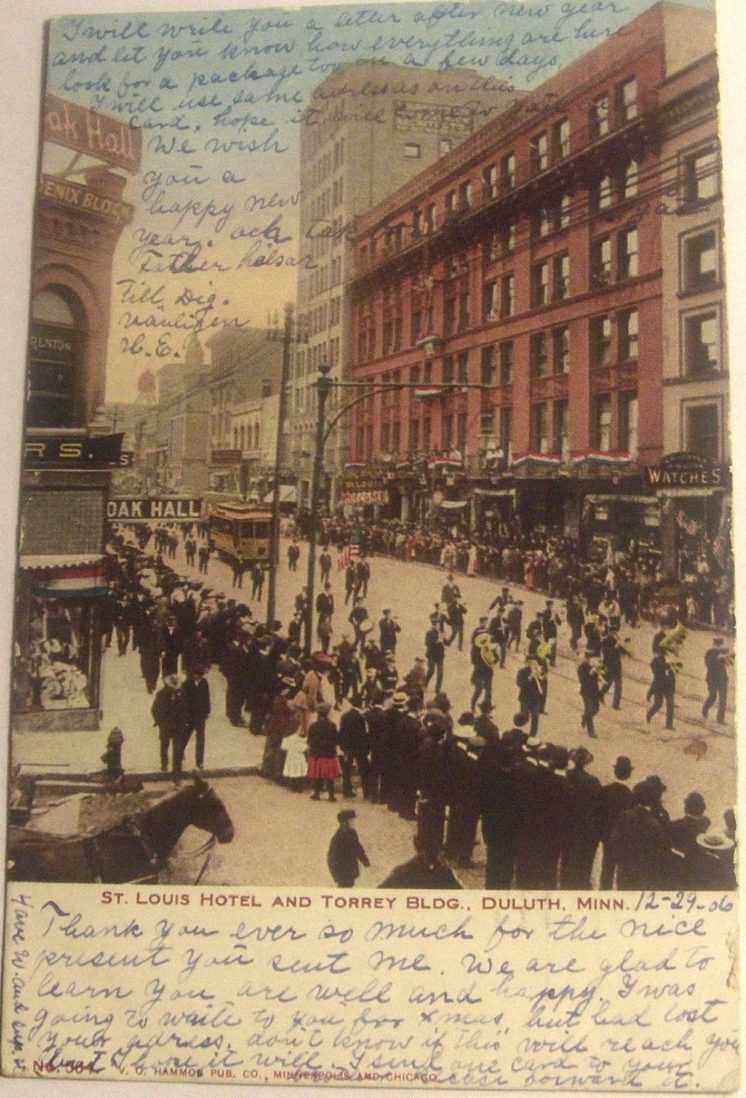
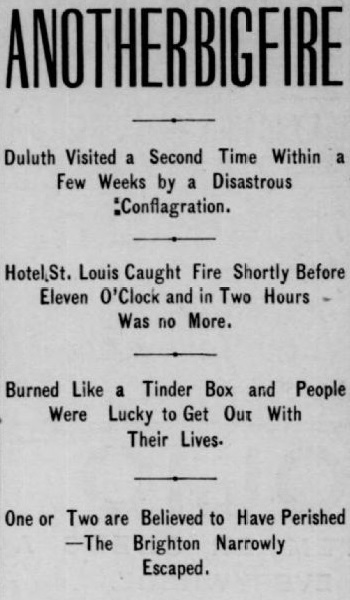
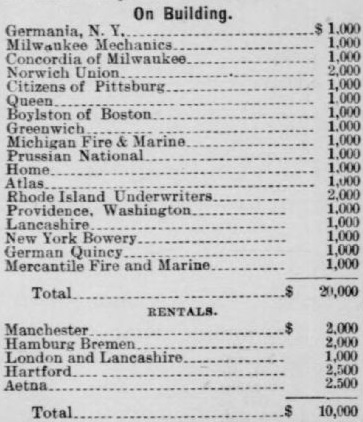
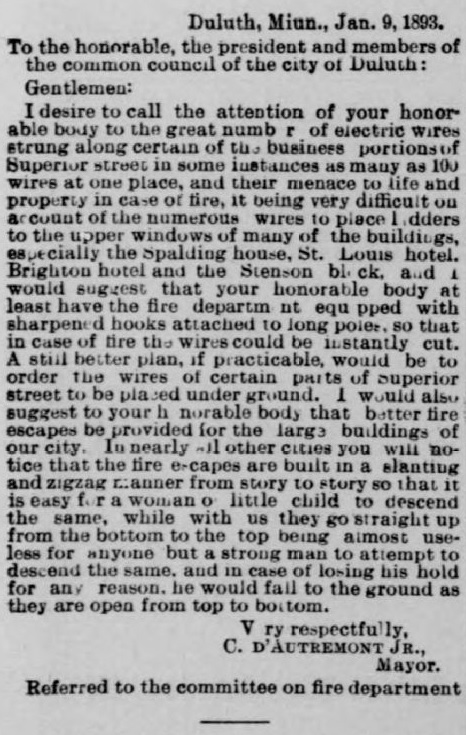
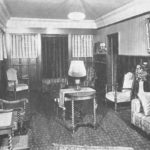











No Comments